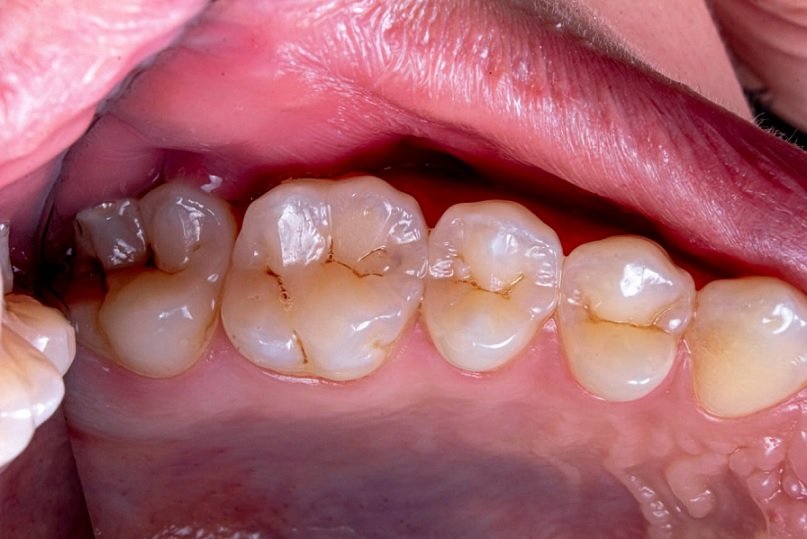For decades, metal amalgam fillings were the go-to solution for repairing cavities. However, advances in dental technology mean patients now have a more discreet and modern option, white fillings, also known as composite fillings. These tooth-coloured alternatives are becoming increasingly popular for people who want a more natural appearance and better long-term comfort.
In this blog, we explore the benefits of white fillings over traditional metal fillings, helping you make an informed choice at your local Sutton Dentist.
What Are White Fillings?
White fillings are made from a composite resin—a mixture of glass and plastic materials designed to blend in with your natural tooth colour. They are commonly used to restore decayed, chipped, or broken teeth, and are ideal for visible areas such as front teeth or anywhere a natural look is important.
Unlike metal fillings, composite fillings are bonded directly to the tooth, which provides both strength and a tight seal.
What Are Metal Fillings?
Metal fillings, also known as amalgam fillings, are made from a mixture of metals including silver, mercury, tin, and copper. While they are strong and long-lasting, they are also dark in colour and easily visible when you smile or talk.
Although they have been used safely in dentistry for over a century, many patients now prefer tooth-coloured alternatives for cosmetic and comfort reasons.
- Natural Appearance
The biggest advantage of white fillings is how natural they look. Composite resin can be colour-matched to your tooth, making the filling virtually invisible. This is especially important if the filling is on a front tooth or near the surface.
Metal fillings, on the other hand, are dark and can be clearly seen when you open your mouth. Many patients choose to replace old metal fillings with white ones for cosmetic reasons alone.
- Less Drilling Required
Another major benefit of white fillings is that they require less removal of the natural tooth during the preparation process. Because the composite material bonds directly to the enamel, the dentist can preserve more of your healthy tooth structure.
In contrast, metal fillings often require more extensive shaping to hold the material in place. This can weaken the tooth over time and may lead to additional treatment in the future.
- Strong Bonding to Tooth Structure
White fillings are chemically bonded to the tooth using a strong adhesive. This creates a better seal, which helps prevent further decay or bacterial leakage. The bonding process also adds structural support, which is especially helpful if the cavity is large or if the tooth has been weakened by previous damage.
Metal fillings do not bond to the tooth in the same way. They are mechanically held in place and may be more prone to loosening or allowing decay to form around the edges.
- Less Sensitivity to Hot and Cold
Because composite resin is not as conductive as metal, white fillings are less likely to cause temperature sensitivity. Metal fillings, especially those containing mercury or silver, can react to hot and cold drinks by expanding or contracting, which may lead to discomfort or tiny cracks in the tooth over time.
White fillings offer a more stable and comfortable option, especially for patients who experience sensitivity with older metal restorations.
- Mercury-Free Option
Many people are concerned about the use of mercury in amalgam fillings. Although studies have shown that mercury levels in fillings are generally safe, some patients prefer to avoid them entirely. White fillings are mercury-free and often chosen by those seeking a more holistic or biocompatible treatment.
This is particularly relevant for patients with allergies, sensitivities, or medical concerns that require non-metal options.
- Easier Repairs and Replacements
If a white filling becomes damaged or needs to be replaced, the process is generally quicker and more straightforward than with metal. The dentist can easily remove the affected area and reapply the composite resin, often without needing to disturb the rest of the filling.
With metal fillings, removing and replacing the material often involves drilling away more of the surrounding tooth structure.
- Versatile Use Across the Mouth
White fillings can be used in both front and back teeth. Modern composite materials are strong enough to withstand the pressure of chewing, making them a suitable option for molars as well. This means patients can have a consistent look throughout their mouth without compromising on durability.
In the past, metal was often recommended for back teeth due to its strength, but today’s composite fillings offer comparable resilience with added cosmetic benefits.
Are There Any Downsides to White Fillings?
While white fillings offer many benefits, they may not be the best choice for every patient or every situation. Some things to consider:
- They may take slightly longer to place, as the bonding process is more detailed.
- In rare cases, composite fillings can stain over time if you smoke or regularly consume tea, coffee, or red wine.
- They may not last quite as long as amalgam in very large fillings, although proper care and regular check-ups can help extend their lifespan.
Your dentist will help you weigh the pros and cons based on the size and location of the cavity, as well as your overall dental health.
Can I Replace My Metal Fillings with White Fillings?
Yes, many patients choose to have their metal fillings replaced with tooth-coloured composites for cosmetic or health reasons. However, this decision should be made with professional advice. Replacing a filling requires removing the old material and evaluating the tooth to ensure there’s enough structure to support a new one.
It’s not always necessary to replace a healthy filling purely for aesthetic reasons, but if your existing amalgam filling is cracked, worn, or causing discomfort, a white filling may be a great alternative.
Conclusion
White fillings offer a natural-looking, comfortable, and modern alternative to traditional metal fillings. With benefits such as better aesthetics, less tooth removal, improved bonding, and reduced sensitivity, it’s easy to see why more patients are choosing composite fillings for their dental care.
If you’re considering your options or thinking of replacing old metal fillings, speak to your dentist. They can assess your needs and help you decide whether white fillings are the best solution for your smile.
Whether you’re after cosmetic improvements or long-term dental health, white fillings provide a safe, effective way to restore your teeth while maintaining a natural appearance.



